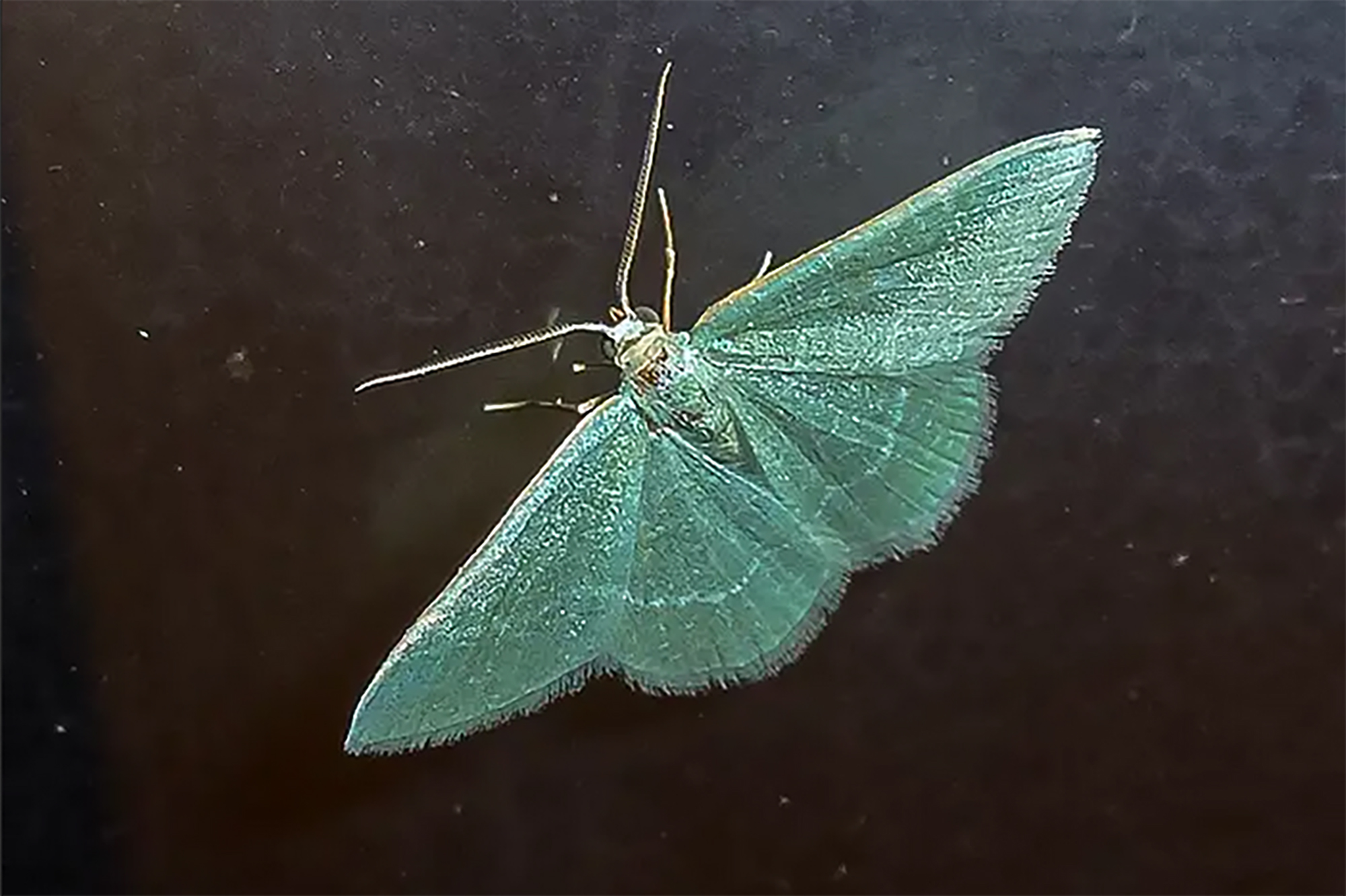Hemithea aestivaria

Common emerald moth. All wings are generally dark green with grey and white chequered fringes and narrow white fascia, two on the forewing, one on the hindwing. The green colouration tends not to fade over time as much as in other emeralds. The hindwings have a sharply angled termen giving the moth a very distinctive shape. The wingspan is 30–35 mm. It flies at dusk and night in June and July and will come to light.
Many geometrids have slender abdomens and broad wings which are usually held flat with the hindwings visible. As such, they appear rather butterfly-like, but in most respects they are typical moths; the majority fly at night, they possess a frenulum to link the wings, and the antennae of the males are often feathered. They tend to blend into the background, often with intricate, wavy patterns on their wings. In some species, females have reduced wings (e.g. winter moth and fall cankerworm). Most are of moderate size, about 3 cm (1.2 in) in wingspan, but a range of sizes occur from 10–50 mm (0.39–1.97 in), and a few (e.g., Dysphania species) reach an even larger size. They have distinctive paired tympanal organs at the base of the abdomen (lacking in flightless females).
Classification
| Kingdom | Animalia |
| Phylum | Arthropoda |
| Class | Insecta |
| Order | Lepidoptera |
| Family | Geometridae |
| Genus | Hemithea |
| Species | Hemithea aestivaria |







